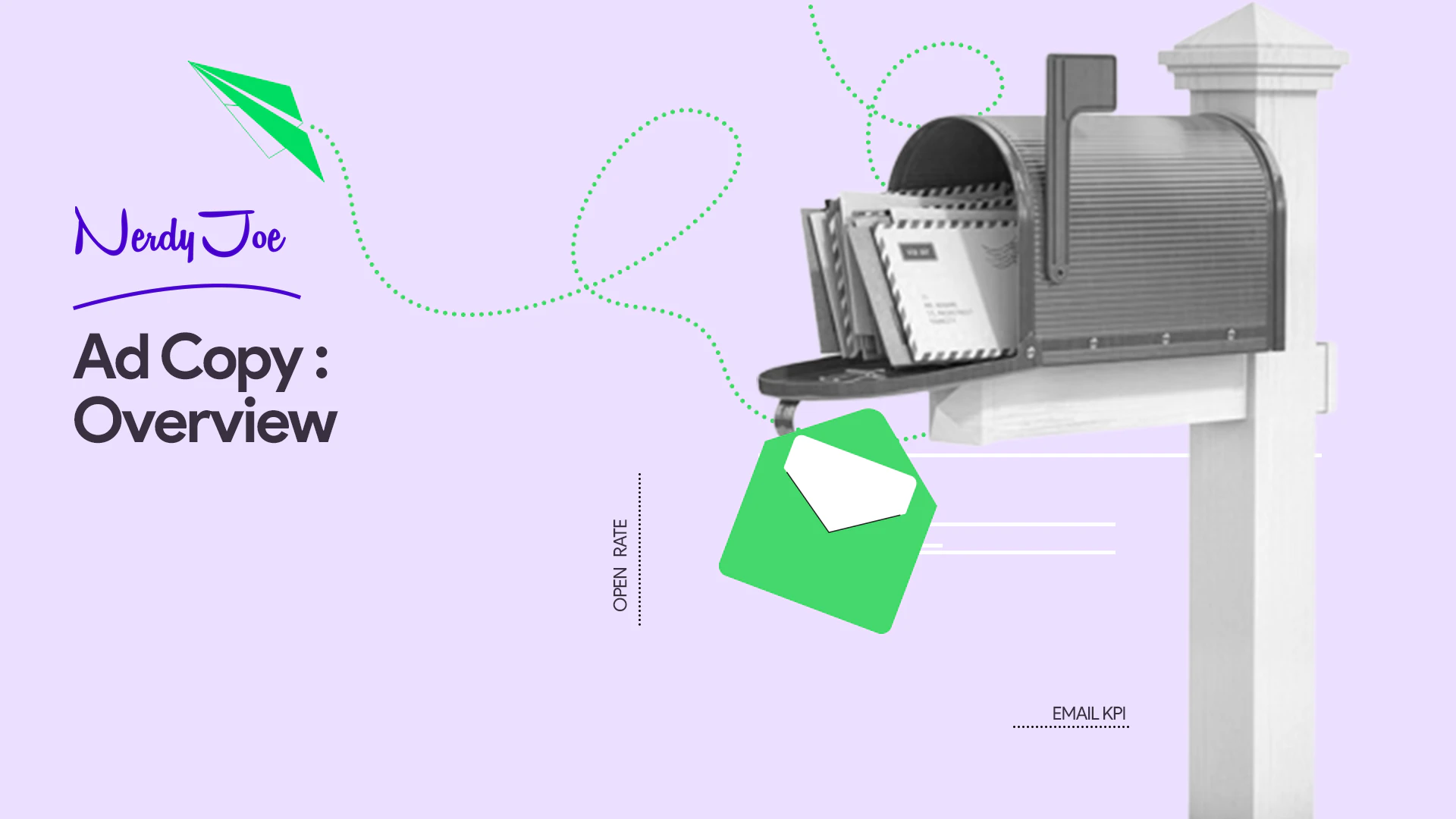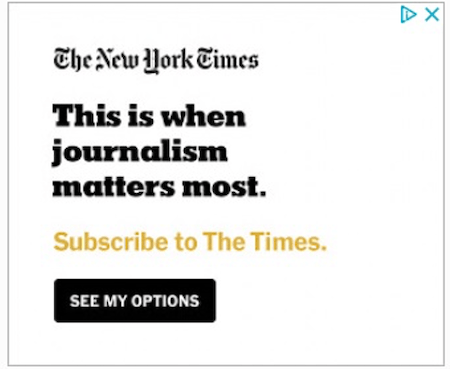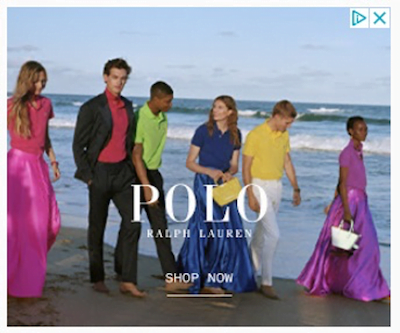
Every brand has a specific message they want to communicate to its target audience. Sometimes, that message can be in the form of a TV campaign, blog post, sales page, banner ad, landing page copy, or ad copy.
An advertising copy is crucial to define your brand’s message, specify the benefits of your product or service, and convince your audience.
Let’s take a further look at what advertising copy means, its types, best practices, and some examples.
What is an ad copy?
Ad copy, also known as advertising copy, is a specific type of content designed to convey the desired message to a given target audience. It usually is used to capture attention through the use of pain points and desired outcome.
It takes place on any advertisement platform, such as print, radio, television, or digital platform.
It can be in any format, such as printed text, spoken voice, dialog, narrative, slogan, motto, or even conversation between two people.
It can also be accompanied by images and literary devices to catch the reader’s attention.
Most times, the purpose of the advertising copy is to deliver the intended message to a specific audience.
The ad copy acts as a middleman between a potential buyer and a salesperson.
- It highlights the key features, pain points, and benefits of a product or service and also addresses any issue the potential buyer may have.
- It also addresses the possible objections a potential customer may have and communicates how the company’s product or service may solve that objection.
- It aims to convince the audience to perform a specific action. Such action may include encouraging the audience to make a purchase, filling out a form, joining a cause, and more.
What are the different types of ad copy
Advertising copies come in different types. Some of them include:
- Educational ad copy
- Reason why ad copy
- Human interest ad copy
- Institutional ad copy
- Expository ad copy
Educational ad copy
The educational ad copy is effective for revealing relevant features and benefits of a particular product or service.
It is designed to educate the public about the specific qualities of a product.
By highlighting the product’s features and benefits, the copy prompts the potential customer to make a purchase after educating them.
Reason why ad copy
A reason why advertising copy provides the reason why a customer should purchase a product or service from a particular brand.
It appeals to the judgment or intellect of an individual rather than emotions or impulses.
It attempts to explain the product’s features and benefits by providing evidence in the form of guarantees, testimonials, customer experiences, and more.
Instagram ad copy and pop up ad are some ad examples of reason why ad campaign.
Human interest ad copy
The human interest ad copy appeals to the emotions and senses of a potential customer rather than sticking to intellect and judgment.
This type of ad copy leverages lust power words a lot.
It presents the product by relating it to the people instead of confirming facts about the product.
Fear, sympathy, curiosity, bonus, and appeal to the human senses (senses of sight, smell, hearing, taste, and touch) are examples of emotions used in this type of ad copy.
The human interest copy is in four significant forms — humorous copy, fear copy, story copy, and predicament copy.
Institutional ad copy
Institutional copy is an ad strategy that doesn’t sell the products or services in a typical marketing campaign.
Instead, it aims to sell the name of the advertiser or the institution that is producing the products or services.
The main objective of this ad copy is to build a strong reputation for the institution by promoting and maintaining goodwill through its philosophies or policies.
This enables potential customers to remember the institution.
Expository ad copy
An expository copy is a a type of advertising strategy that doesn’t conceal the details of a product or service.
It is so open that the facts are expressed clearly and simply for the readers to understand.
This type of ad copywriting describes the product’s features, benefits, operations, and uses in a way that the readers will understand.
Seven tips to write excellent digital marketing ad copy
Once you have determined the type of ad creative to write, you need to learn how to write well your ad copy.
Here are some ad copywriting tips that can help you in creating an effective ad copy.
1 – Think visually
When writing an ad copy, it is not enough that you only know what to say. Sometimes, you need to know how to say it.
To do this, you can use numbers, whitespace, or symbols, for example, to declutter your work.
Include a catchy headline and work with a designer to get the most out of your copy.
2 – Use emotion words
When you are writing copy, consider putting yourself in your audience’s shoes. Think about what they could be feeling when they are reading your ad text.
Is it anger, excitement, or fear? Use emotional words to feelings your audience can relate to and enable them to go through your copy.
3 – Add social proof
When crafting your ad headlines, consider including social proof. This establishes credibility and persuades your audience.
As a great example, a simple “75% of small businesses use our solution” can persuade your audience to see what you have to offer.
4 – Grab the reader’s attention
You must be direct and sound confident in your ad copy. Put the most important message in the first sentence and ensure it sounds attractive and creative.
Don’t make it sound boring. Avoid fluff and have some fun, making your copy engaging.
5 – Use target keywords
Great ad copy must include the target keywords to match the user intent.
Ensure that you include the target keyword in the headline and the body of the copy so that it delivers to the right audience.
The best ad copy contains content that is relevant to the search query. Hence, you don’t want to miss your target audience.
6 – Include a clear call to action
What do you want your audience to do after reading your ad? What is the end goal?
An effective ad copy includes a call to action that urges the audience to take the next step.
You can’t assume your audience knows the next thing to do.
Instead, spell the next action they need to perform in a clear and simple language, whether it is to learn more or buy now.
7 – Add benefits
Your potential customer wants to know if your products or services can solve their problems.
Putting this in mind, write an ad copy that states the benefits of your product.
This enables them to have a clear understanding of what they are getting for their money and prompts them to buy.
15 ad copy best practices
An ad copy isn’t a one-size-fits-all scheme. As there are different types of ad copy, different platforms have their own unique ad copy style.
In this segment, we will take a look at the best practices of ad copy for two platforms – Facebook and Google.
Five Facebook ad copy best practices
Here are five best practices for you when you are crafting your Facebook ad copy.
1 – Tell a story
Storytelling is a powerful tool that enables you to connect with potential customers who don’t know you and allows you to get your message across without being intrusive.
A creative story can grab your audience’s attention and allow them to be more familiar with your brand.
When writing a Facebook ad copy, ensure that the text and image align with each other to tell a story.
This shows the personality behind your brand and makes you look credible to your audience.
2 – Write a short and simple content
Facebook ad copy features character limits that enable your audience to see all your text at once.
These limits include:
- 25 characters for a headline
- Headline between two words and six words
- 30 characters for the link description
- 125 characters for the primary text
Consider these factors when crafting your ad copy. Use simple language to communicate your ideas.
3 – Include a call to action (CTA)
A strong CTA button accomplishes a lot. It prompts your prospects to respond to your ads and inform them of the next action to perform.
Include a strong CTA in your Facebook ad to inform them of the next step to do.
4 – Ensure the copy matches the visual
If your ad copy isn’t cohesive, it can discourage your prospect from clicking further.
Facebook, for example, is a visual platform where people have expectations of high-quality pictures.
If your photo is blurry or distorted, you may not receive enough engagement on a post.
Also, ensure that the picture you use aligns with the content of your ad copy.
5 – Measure the results
Measure the result of your ad campaign to determine whether it is a success or not.
Measuring the result isn’t dependent on the amount of engagement you receive. Instead, check out whether it aligns with your marketing goals.
Five google ad copy best practices
Here are five best practices for you when crafting google ad copy.
1 – Match your ad copy with the user intent
Google ads are different from ads on social media platforms.
Here, your prospects came to the search engine for a particular purpose — to solve their problem.
When crafting the ad copy, you must keep this note in mind. Tailor your ad copy to fit the user intent.
The user intent means that people are looking for answers to their questions or want a solution to their problem.
When you do this, your ads get a higher click-through rate, and the ads quality score will increase, leading to lower prices and better ad positions.
2 – Focus on the benefits
The benefits derived from your products or services are the results your customers receive after usage. It is what your customers paid for.
Selling the benefits of your products enables your audience to understand what they are getting and can even prompt them to buy them.
3 – Leverage keywords
When writing a Google ad copy, ensure that you include keywords to mirror the search query.
Use the keywords well. Do not oversaturate your ad copy with keywords as it could bring in worse results.
4 – Include a call to action
You are writing a Google ad copy because you want your audience to take a specific action. For some, it may be to make a purchase.
For others, it may be to fill out a form.
No matter what the action is, it is essential to let your audience know what you want them to do and what they should expect.
5 – Personalize your ad copy
Although you are writing ads that will be seen by a large audience, you must personalize your ad copy by speaking directly to your customers.
In other words, speak to them with the second person point of view — you.
Since you can’t personalize ads with your visitor’s first name, speak to them with the “you” pronoun rather than “we” or “our” pronoun.
It creates a sense of belonging and shows that you focus on your customers.
Five display ad copy examples
Now that you know what ad copy entails, let’s take a look at five ad copy examples of display ad copies.
1 – HP

Source: HP
This display sends a clear and apt message to the audience. It appears to target small and medium-sized businesses that struggle during tax season.
The ad is heavily contextual as it focuses on an issue businesses and the public may be facing then – the approaching tax deadline.
Nonetheless, it has a colorful layout and engaging text that catches the attention of the audience.
2 – Bluehost

Source: Bluehost
This display ad expresses a simple and clear message for the audience. First is the use of an eye-catching headline that communicates the pricing of the service.
Underneath the bold headline is the main features such as unlimited and transfer which communicate what Bluehost offers.
The “Free set-up” and “Free domain” further intrigues the audience. Then, there is a clear call to action that tells the audience to “sign up.”
3 – Microsoft

Source: Microsoft
This display ad highlights the central message of Microsoft advertising which is to connect with new customers.
It also consists of a clean layout and makes use of a green palette which is visually appealing to the customers.
The ad also incorporates images of people, which makes it feel more real and engaging to the audience.
4 – New York Times

Source: NYT
In a world where social media platforms such as Twitter are a common source of news stories, people need a reliable source of information.
That is where the inscription “This is when journalism matters most” in the New York Times appears.
It urges the audience to subscribe to the news source to get credible news.
Then, there is a call to action, “See my options” that urges the audience to perform the next action.
5 – Polo Ralph Lauren

Source: Polo Ralph Lauren
The image in this advert conveys a basic idea of the type of industry the brand operates in — fashion.
As it appears, the brand intends to market its latest collection to the public. That is what the display ads communicate to the audience.
Five ad copy templates
Depending on the situation, ad copy templates take different forms.
For instance, the template for special holidays differs from one that offers discounts.
You just need to select the right template that fits the appropriate context.
Here are five ad copy templates you can use where necessary.
Killer testimonial
A solid validation for potential customers is social proof.
You can leverage your ad with a testimonial by indicating your customer’s unique selling point (USP). In other words, you don’t have to tell your customers about your USP.
Instead, you can allow them to hear about your USP from a real, happy customer.
Here is an example.
“Without hesitation, this is the best cake I have ever tasted.” — Sandra L.
“Worked within 24 hours. No more hives”…..Find out what helped Blake get rid of his bee problem.
Capitalize keywords call-outs
Although you can’t make the keywords prominent in Facebook like you can in Google ads, you can induce the same feeling by capitalizing some important words that can stand out to users when scrolling.
Here is an example:
10 killer tips that can BOOST productivity and REDUCE stress at work.
How it works
You can tell your potential customers how your service or product works so that they can feel more confident in your brand.
Here is an example:
With [Company name], the journey to your healthy weight begins
- Virtual trainer visit
- Personalized fitness plans
- Monthly weight check-ups
That’s right — no commuting or gym visit needed. Get started with [company] now with a comprehensive weight loss plan for $20.
Lead with discounts
Having a strong discount for your products or services can attract potential customers and generate some good leads.
Depending on the situation, you can lead with a discount when an ad auction increases or during special holidays.
Here is an example:
Don’t miss out on 10% OFF various clothings during the clearance sales!
Holiday/Seasonal call-out
A holiday can help your ad feel new and timely. For major gifting holiday such as Christmas, you can mention the products that are beneficial to your potential customers.
Here is an example:
Special Holiday Offering!
Treat your kids to a [Product] this year
With [Company name], you can have an exciting and fun screentime that brings their favorite character to life
Get 10% OFF this offer now with code FY20
Key takeaways
- An ad copy is a specific type of content expressed in words and designed to convey the desired message to the target audience.
- Ad copies are of different types. Some examples include educational copy, reason why copy, human interest copy, institutional copy, and expository copy.
- For an ad copy to be effective, you must adhere to some tips, such as including a clear call to action, focusing on the benefits, using emotional words, grabbing the reader’s attention, and more.